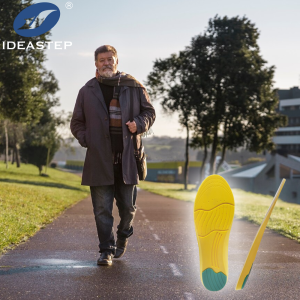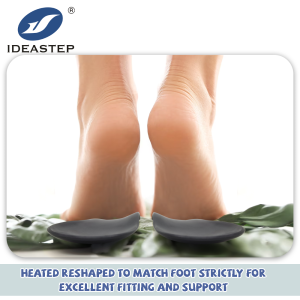Summary: Do Flat Feet Insoles Work? Flat feet are a common foot deformity affecting millions of people. While mild cases may not cause significant discomfort, severe flat feet can lead to pain, stiffness, and functional limitations. Orthotics like custom-made flat feet insoles can be used to alleviate these symptoms. How Orthotics Help: * Correct foot alignment and prevent inward collapse. * Provide supportive cushioning to absorb shock and reduce discomfort. * Prevent pain caused by flat feet. Potential Benefits: * Postpone or avoid surgery. * Reduce pain and discomfort. * Improve balance and stability. * Enhance comfort and functionality. Considerations: * Severity of the flat feet deformity. * Presence of other foot conditions or injuries. * Individual’s activity level and foot function. When to Seek Professional Help: * Experience pain, stiffness, or functional limitations due to flat feet. Conclusion: Orthotics can be a valuable tool for managing flat feet and preventing associated pain and complications. Consult with a healthcare professional for an accurate diagnosis and personalized treatment plan.

Do Flat Feet Insoles Work?
Flat feet are a common foot deformity affecting millions of people worldwide. While mild cases may not cause significant discomfort, severe flat feet can lead to pain, stiffness, and functional limitations. Many people turn to orthotics, such as custom-made flat feet insoles, to alleviate these symptoms.
How Orthotics Help Flat Feet:
Custom orthotics are designed to provide targeted support and correction for flat feet. These insoles work by:
- Correcting alignment: Orthotics stabilize the foot arch and prevent excessive inward collapse, restoring proper alignment and reducing pain.
- Supportive cushioning: The materials used in orthotics absorb shock and provide additional cushioning, reducing discomfort and stiffness.
- Preventing pain: By correcting alignment and providing support, orthotics can prevent knee and ankle pain caused by flat feet.
Potential Benefits of Flat Feet Insoles:
- Postpone or avoid surgery for flat feet-related problems.
- Reduce pain and discomfort.
- Improve balance and stability.
- Enhance comfort and functionality.
- Prevent further progression of the deformity.

Considerations:
While orthotics can be effective for many people with flat feet, they are not suitable for everyone. Factors to consider include:
- The severity of the flat feet deformity.
- The presence of other foot conditions or injuries.
- The individual’s activity level and foot function.
When to Seek Professional Help:
If you experience pain, stiffness, or functional limitations due to flat feet, it is important to seek professional advice from a podiatrist or foot specialist. They can assess your condition, determine if orthotics are right for you, and recommend appropriate treatment options.

Conclusion:
Custom orthotics can be a valuable tool for managing flat feet and preventing associated pain and complications. While they are not a cure for the deformity, they can significantly improve foot function and quality of life. If you suspect you may have flat feet, consult with a healthcare professional for an accurate diagnosis and personalized treatment plan.
FAQ
Q: Do flat feet insoles actually work?
A: Yes, custom-made flat feet insoles can be effective in correcting alignment, providing support, and reducing pain associated with flat feet.
Q: What are the potential benefits of wearing flat feet insoles?
A: Benefits include pain reduction, improved balance, enhanced functionality, and prevention of further deformity progression.
Q: Who should consider getting flat feet insoles?
A: Individuals with severe flat feet, pain, stiffness, or functional limitations are good candidates for orthotics.
Q: Are flat feet insoles suitable for everyone?
A: No, certain factors like the severity of the deformity, presence of other foot conditions, or activity level may determine their suitability.
Q: When should I seek professional help for flat feet?
A: Seek professional advice if you experience pain, stiffness, or limitations in your foot function.



